KS2 Transformations Worksheets
Lines of Symmetry
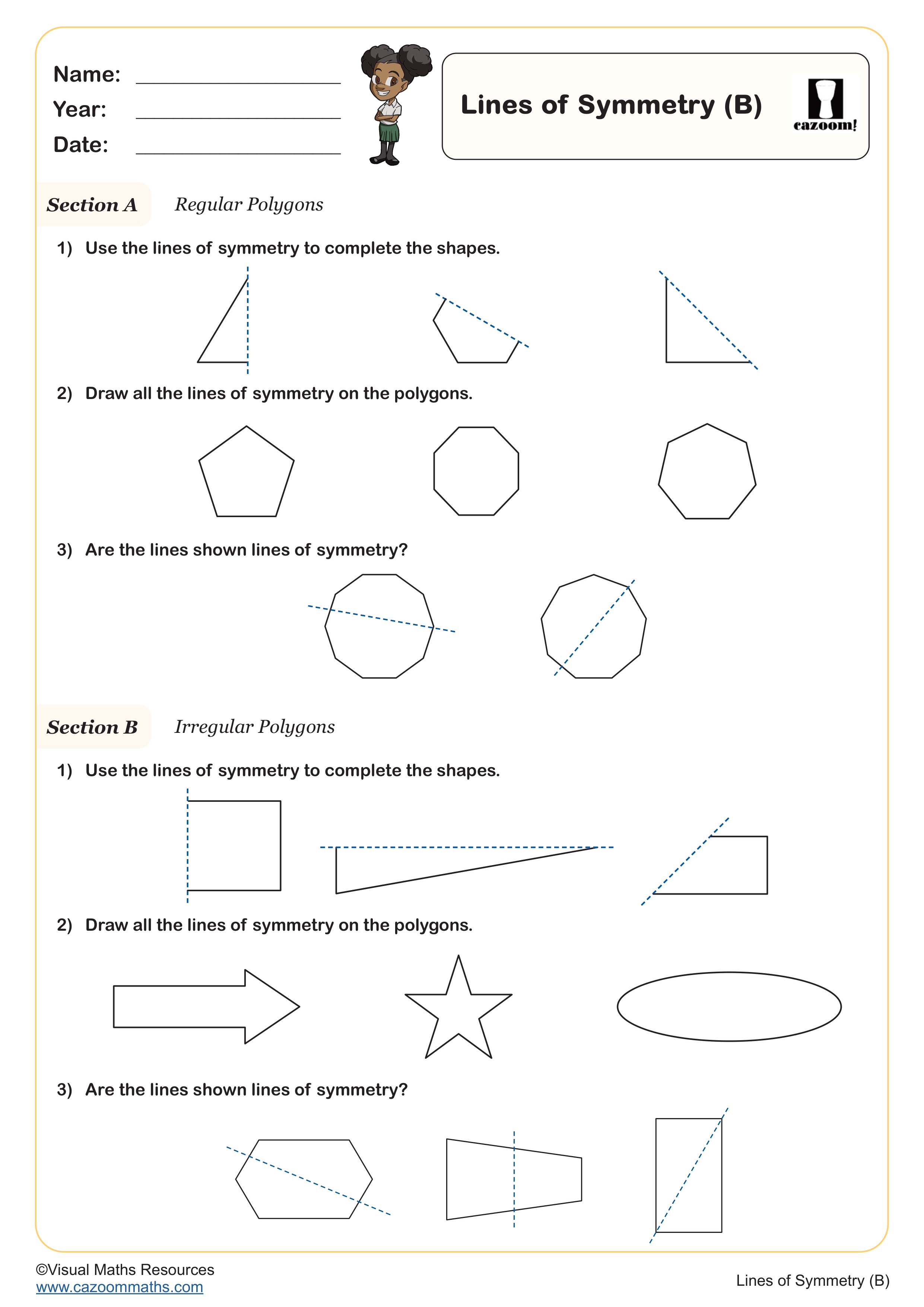
Refelction in Horizontal and Vertical Mirror Lines
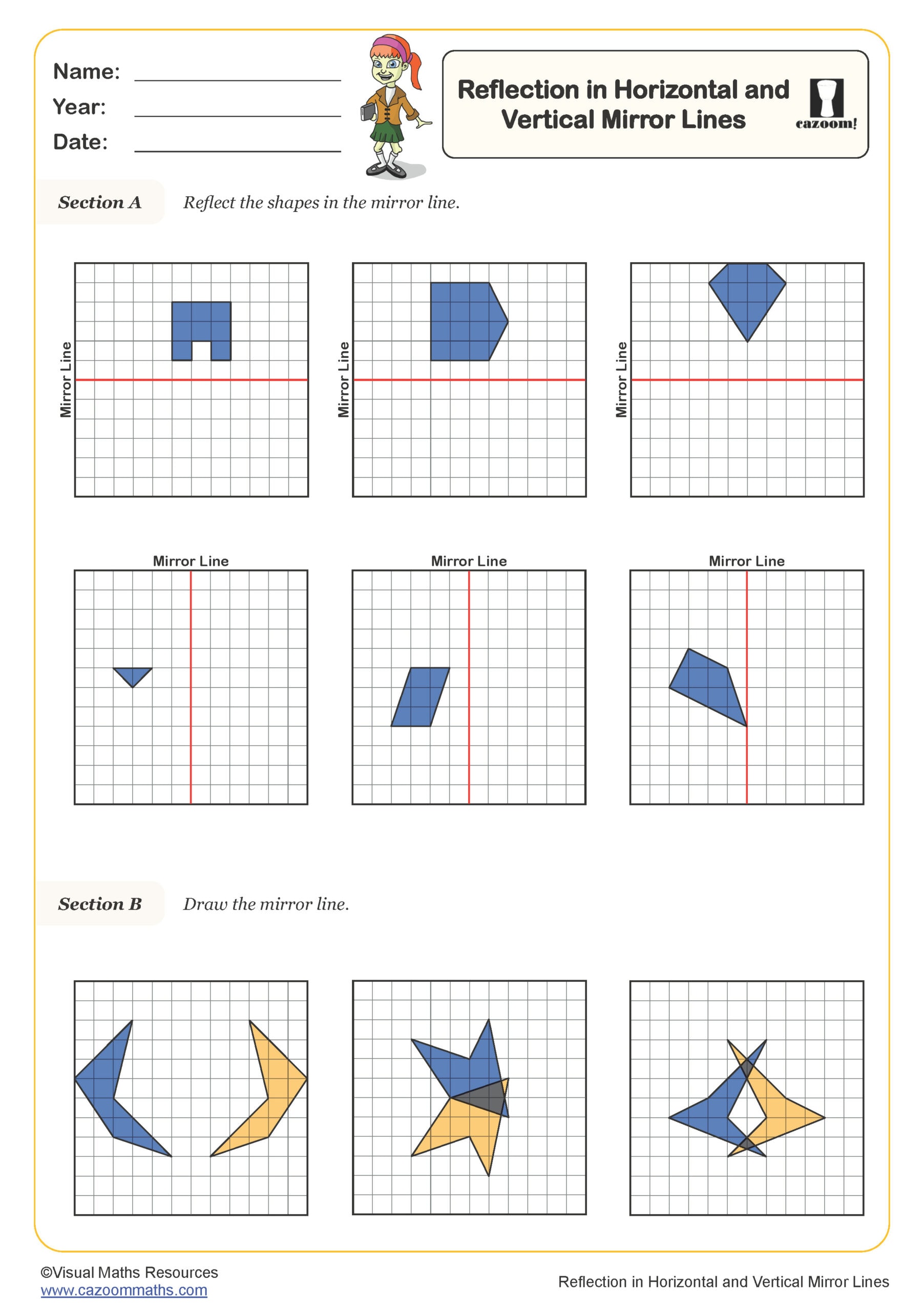
Reflection in Horizontal, Vertical and Diagonal Mirror Lines
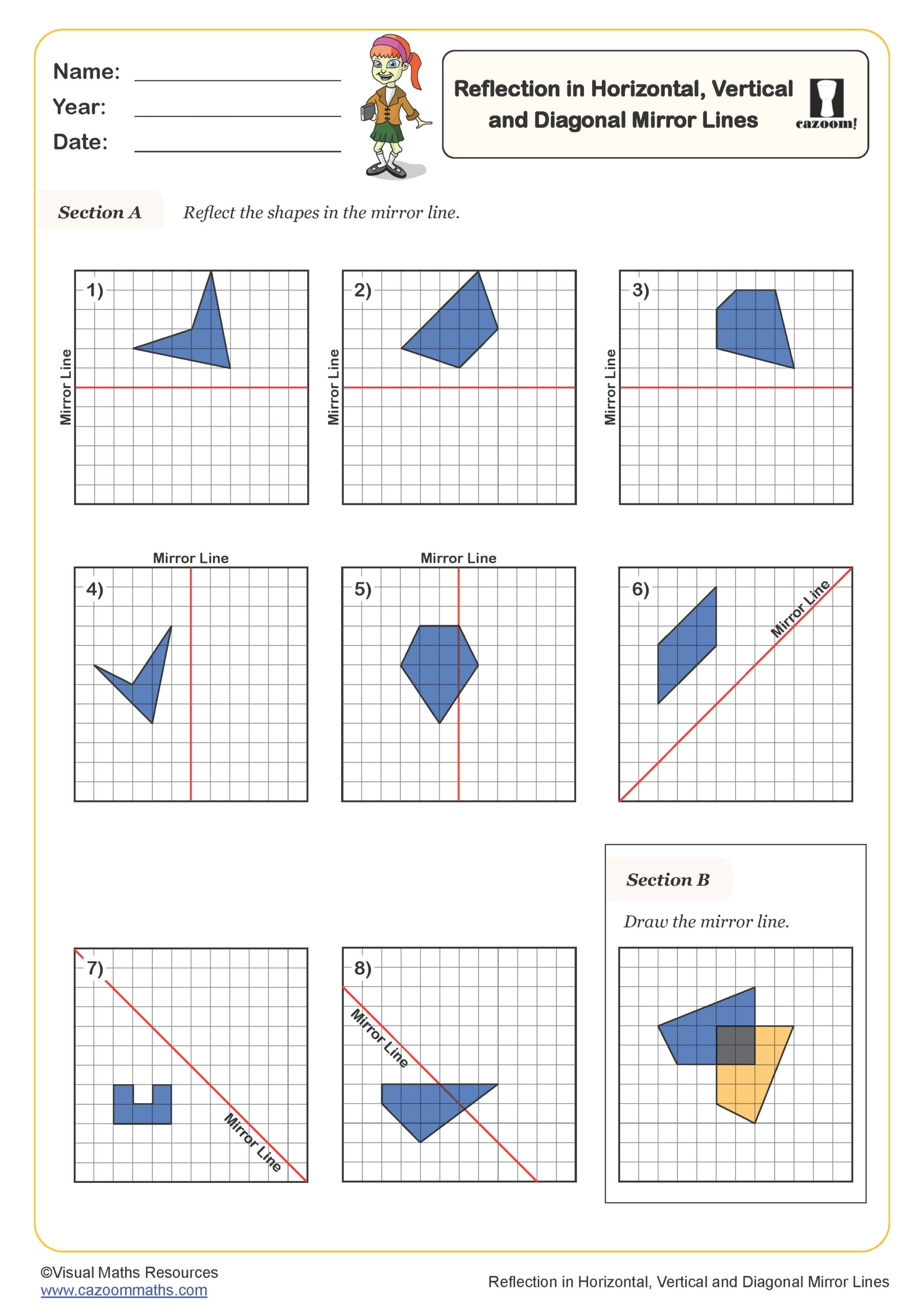
Reflection in X and Y Axes
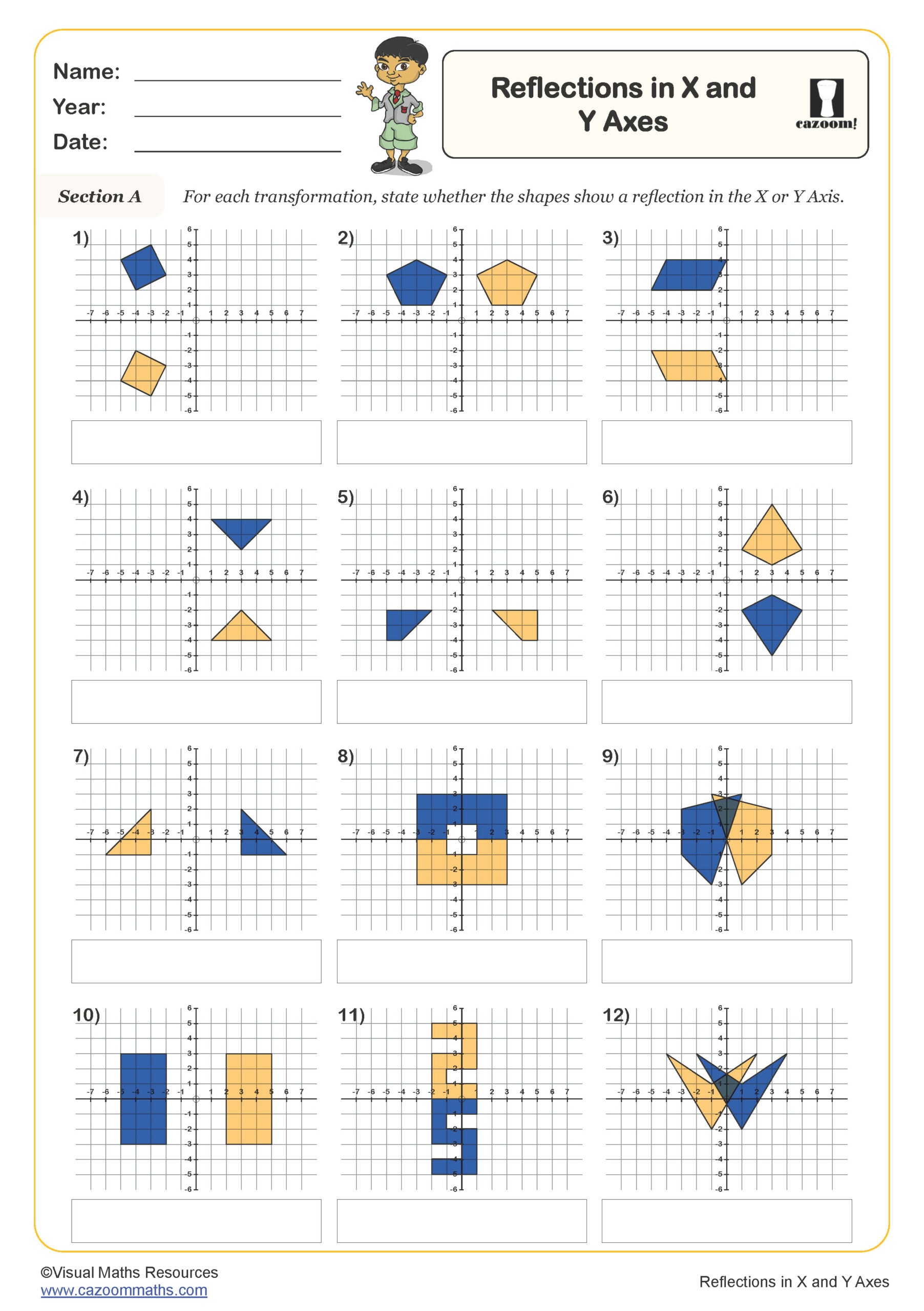
Reflections in the 1st Quadrant (A)
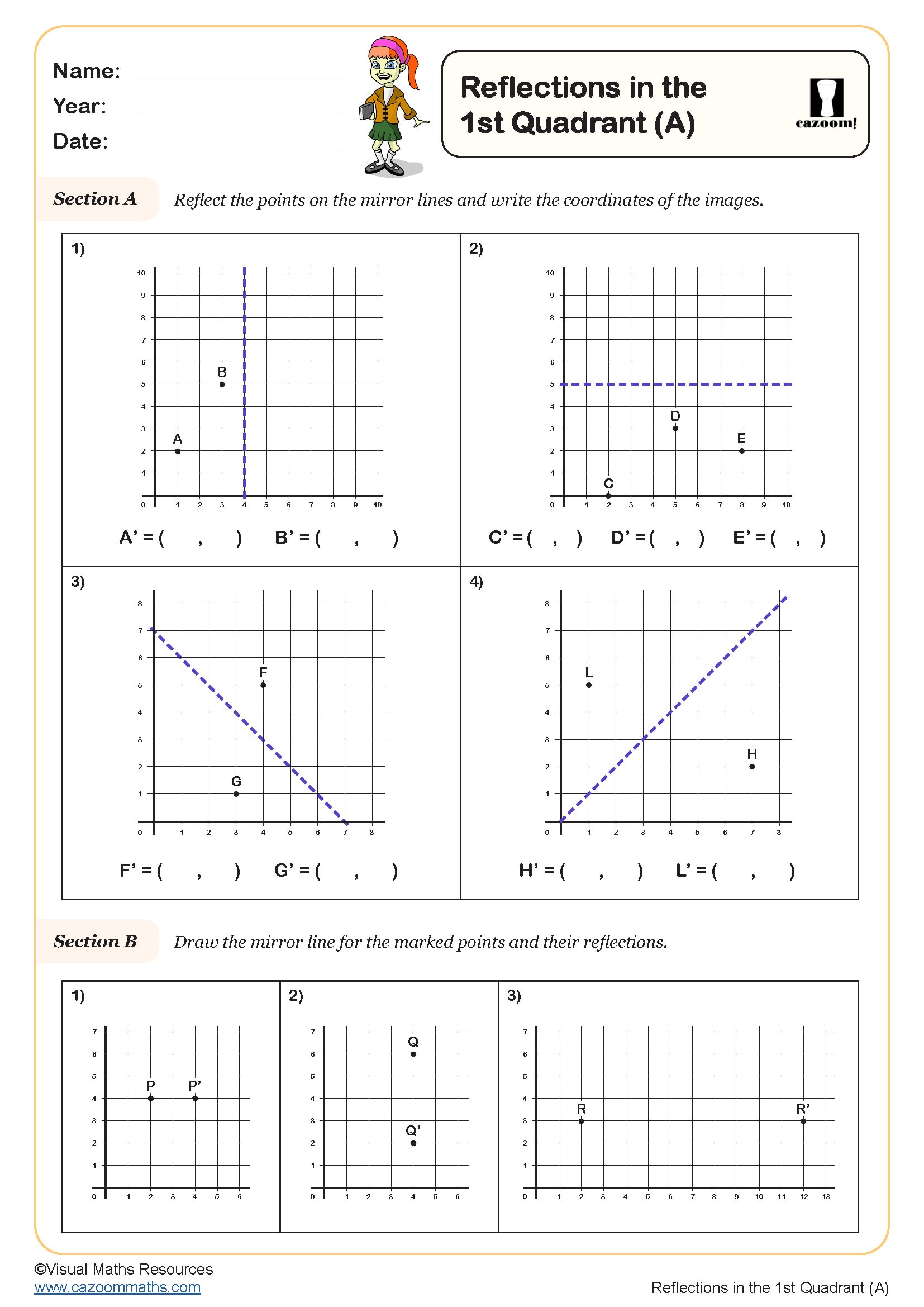
Reflections in the 1st Quadrant (B)

Translations - from Words
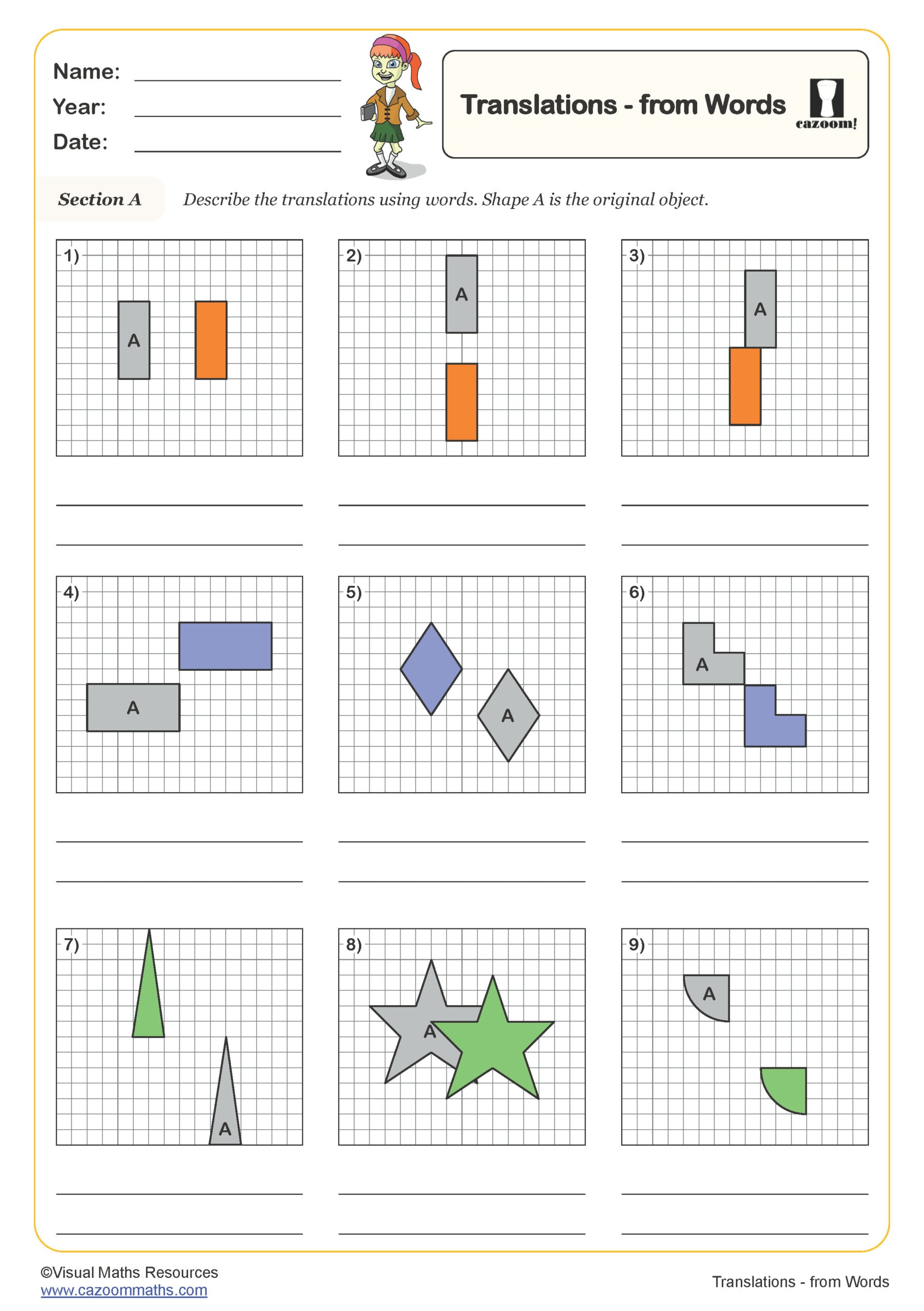
Translations and Reflections in the 1st Quadrant
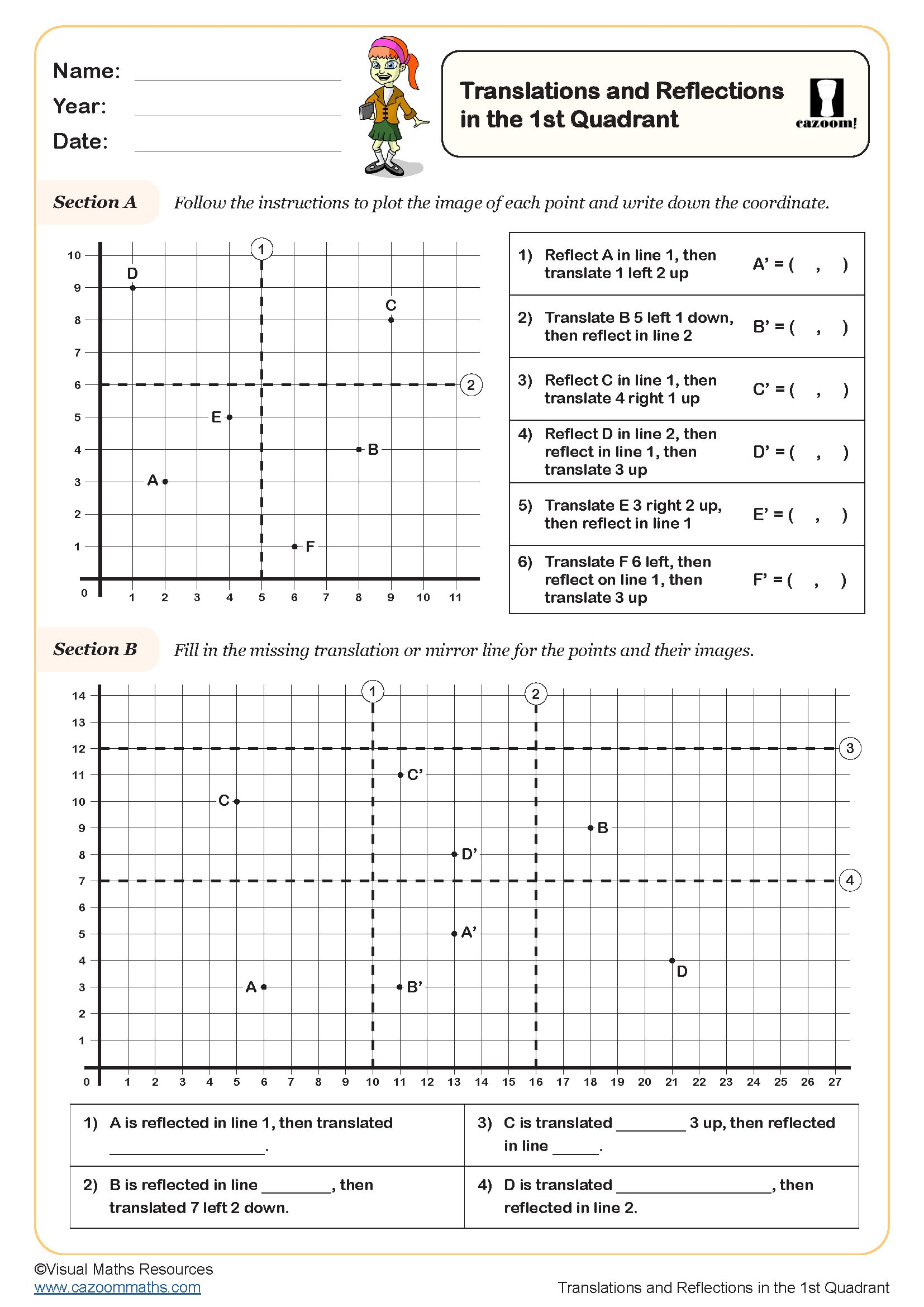
Translations in the 1st Quadrant (A)
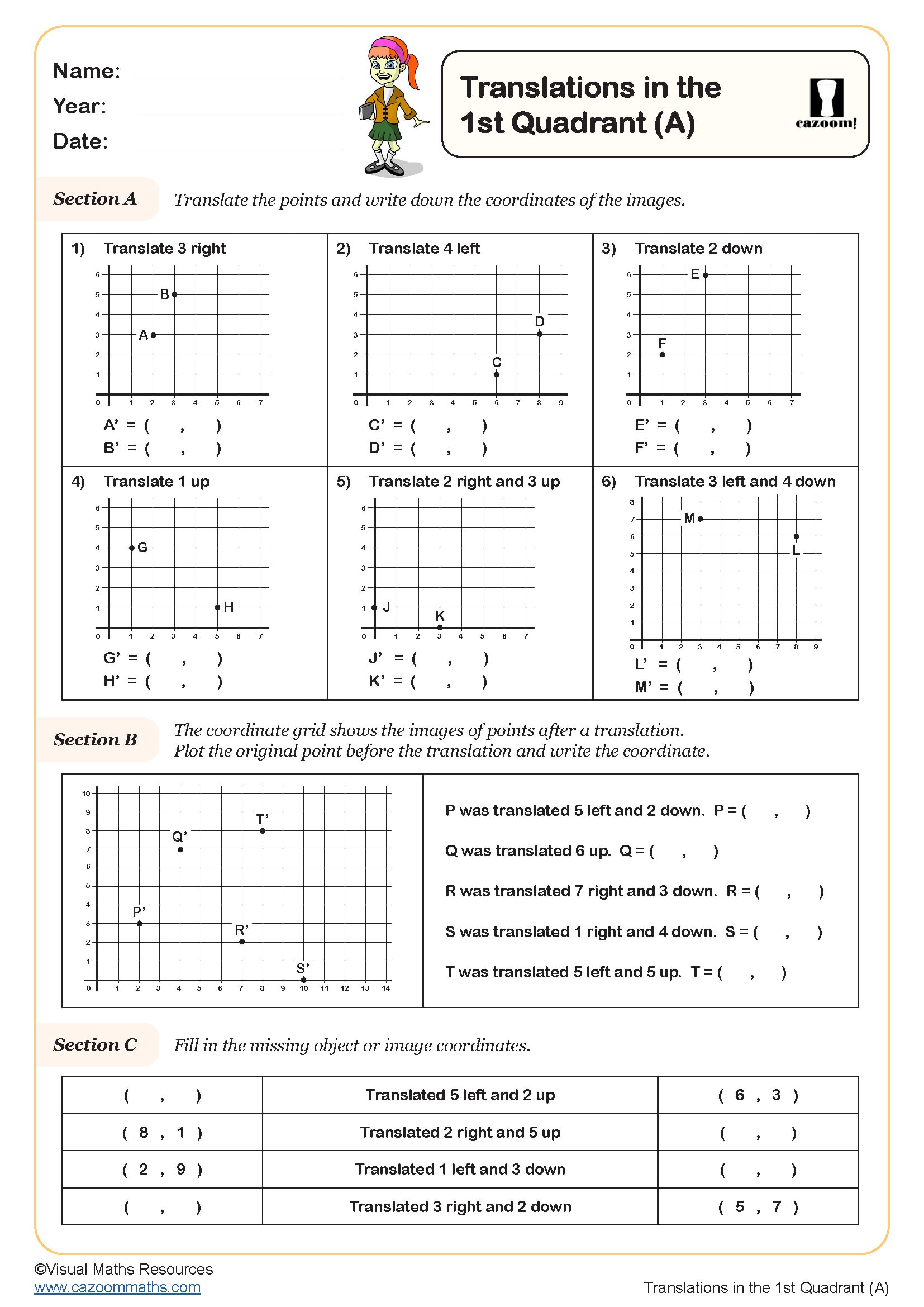
PRINTABLE TRANSFORMATION WORKSHEETS PDF WITH ANSWERS
Check our downloadable transformations maths ks2 worksheets pdf which will help young learners to improve their knowledge of reflection, rotation, and translation and many more related concepts. These worksheets are created in easy-to-download PDF format, include answers, and are designed to help young learners better understand and practise their transformation skills. These are excellent resources that will make the learning process fun and interesting!
What Is Transformation In Geometry?
In geometry, transformations refer to the ways in which we can move or change a shape without altering its basic form. Think of it as manipulating a piece of paper: you can slide it, flip it, or turn it. These actions correspond to the main types of transformations: translation (sliding the shape to a new position), reflection (flipping the shape like a mirror image), rotation (turning the shape around a point), and dilation (resizing the shape bigger or smaller while maintaining its form). Each transformation retains certain properties of the original shape, offering a fascinating way to explore and understand the spatial relationships of geometric figures in our surroundings.
Understanding The Concept Of Transformation
Understanding the concept of transformation in geometry is much like playing with a shape’s position and size on a piece of paper. At its core, transformation is about moving or altering a shape without changing its intrinsic form. Imagine you have a sticker of a star. If you slide it across the paper, you’re translating it. If you spin it, that’s rotation. Mirroring the star’s shape as if there’s an invisible line between them is called reflection. And if you were to stretch or shrink it, keeping its star-like appearance, that’s dilation. These transformations show how shapes can relate, change, and maintain certain properties, helping us visualise and comprehend their behaviours in various contexts.
Use Of Transformation In Real Life
Transformations in geometry play a significant role in our daily lives, often without us even realising. Architects use transformations when designing buildings to create symmetrical facades or rotated layouts. In art, reflections and rotations are used to create patterns and designs. Even when adjusting rear-view mirrors in cars, we’re applying the concept of reflection to get the best angle to see the traffic behind. Computer graphics, used in video games and films, heavily rely on transformations to animate characters and objects. Additionally, map-makers use transformations to project the Earth’s round surface onto flat maps. Clearly, from the creative to the practical, transformations help shape the world around us.